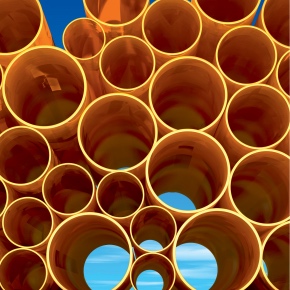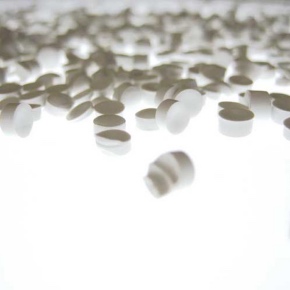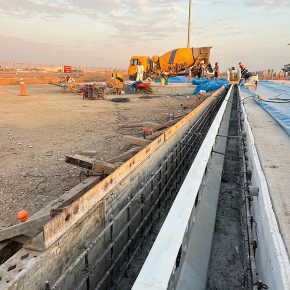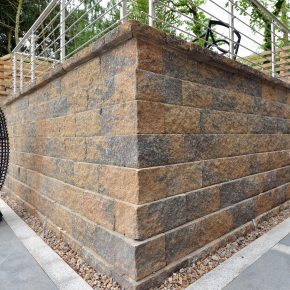
The benefits of using recycled polymers
Sophie Thomas, Director of design at the Royal Society for the encouragement of Arts, Manufactures and Commerce discusses the benefits of using recycled polymers from companies like Axion Polymers to ‘go green’.
The use of recycled plastics in new goods offers designers various environmental, economic and commercial benefits.
 As consumers are increasingly basing purchase decisions on a product’s sustainability, manufacturers, brand owners and retailers are focusing more on ethical principles to promote their brands and build customer loyalty.
As consumers are increasingly basing purchase decisions on a product’s sustainability, manufacturers, brand owners and retailers are focusing more on ethical principles to promote their brands and build customer loyalty.
Product designers and specifiers of materials are working towards sustainable product design in a move towards a circular economy in which resources are recovered at the end of each service life and reused in new products.
In order to achieve this, designers and specifiers of materials are challenging norms and habits and focusing the material supply chain to link up the circular loop and tap into the ready and growing supply of sustainable polymers coming from the innovative waste reprocessing sector.
The local authorities in the UK, the recycling industry and the wider supply chain have made significant improvement in working towards a circular economy for plastics and reusing these valuable resources.
 Raw material scarcity needs to be considered and recycling existing polymers ensures a sustainable and consistent supply for the future. Recycled polymers typically have about 50% to 75% of the carbon impact compared to taking oil out of the ground and creating a new polymer.
Raw material scarcity needs to be considered and recycling existing polymers ensures a sustainable and consistent supply for the future. Recycled polymers typically have about 50% to 75% of the carbon impact compared to taking oil out of the ground and creating a new polymer.
Recycled polymers are high quality and greatly available, allowing for a reliable and sustainable supply of locally sourced recovered materials.
End users that enter into a long-term supply agreement with an integrated recycling business, such as those in the end-of-life vehicle or construction products sectors, can benefit from a reliable local feedstock.
This shorter, lower risk supply chain from UK-based recyclate suppliers makes future production planning easier.
 In addition, recycled plastics can be recycled many times through a well-structured end of life re-supply chain.
In addition, recycled plastics can be recycled many times through a well-structured end of life re-supply chain.
Axion Polymers produces recycled plastics derived from end-of-life vehicles to make new automotive-related products. Axion Polymers are used in various industries, including water treatment, horticulture and retail goods.
Axion benefits from in-house technical expertise that recover and refine recycled materials from end-of-life vehicle shredder residue, providing a consistent product from a guaranteed feedstock supply.
Axion Polymers Director Keith Freegard says, “Creating new manufactured products using materials resources that are ‘mined’ from closed-loop recycling provides a novel and environmentally-responsible approach for vehicle producers that is both sustainable in the long term and also lower cost.”
PVC is suitable for use in building products with green credentials as it can be readily recycled many times with no loss of performance. VEKA Recycling processes post-industrial and post-consumer PVC window frame material to a high standard of purity at its Kent site.
VEKA Recycling Commercial Director Simon Scholes explains, “Recycled PVC offers clear advantages of reliable consistent supply and, of course, improves the environmental credentials of manufacturer’s products. In releasing the reliance on virgin polymers, we are giving longer life to plastic.”
Designers need to understand the design principles that enable the efficient release and recovery of materials during the recycling process. Equally, they should recognise the ‘black marks’ that apply to poorly designed products and wrong combinations of materials. Many everyday products have simple design-for-recycling guides, created by recyclers, which explain the ‘dos and don’ts’ of good design for recyclability.
Latest news

22nd January 2025
AWMS Gatic UltraSlot meets rigorous drainage demands at Peru’s new ‘Airport City’
The new Jorge Chávez Airport in Peru is one of the most pioneering airport projects ever undertaken in South America – it features Gatic UltraSlot from Alumasc Water Management Solutions (AWMS).
Posted in Articles, Building Industry News, Building Products & Structures, Building Services, Case Studies, Civil Engineering, Concrete, Cement, Admixtures, Drainage, Drainage Services, Drainage, Guttering, Soffits & Fascias, Facility Management & Building Services, Hard Landscaping & Walkways, Landscaping, Pipes & Fittings, Plumbing, Posts, Restoration & Refurbishment, Retrofit & Renovation
22nd January 2025
Registration opens for LIFTEX 2025 (11 - 12 June)
Registration has opened for LIFTEX 2025. Now in its 37th year, the show is the UK’s only dedicated exhibition for the lift, escalator and access industry and takes place only once every three years.
Posted in Accessibility, Articles, Building Associations & Institutes, Building Industry Events, Building Industry News, Building Products & Structures, Building Regulations & Accreditations, Building Services, Exhibitions and Conferences, Facility Management & Building Services, Health & Safety, Restoration & Refurbishment, Retrofit & Renovation
22nd January 2025
Saniflo’s Saniplus UP facilitates garden retreat by Shack Cabins
Thanks to a Saniplus UP from Saniflo, a new garden retreat in the capital has been elevated to a new level of comfort and convenience.
Posted in Articles, Bathrooms & Toilets, Bathrooms, Bedrooms & Washrooms, Building Industry News, Building Products & Structures, Building Services, Case Studies, Drainage, Facility Management & Building Services, Garden, Interiors, Pipes & Fittings, Plumbing, Restoration & Refurbishment, Retrofit & Renovation
22nd January 2025
Groundworkers - improve your tender success rates with Tobermore's Secura Portal
For groundworkers, tendering residential retaining wall projects can be a time-consuming and complicated process. The key is to tender using Tobermore’s Secura modular concrete block retaining walls rather than the default masonry specification & the Secura Portal, an online tool.
Posted in Articles, Bricks & Blocks, Building Industry News, Building Products & Structures, Building Services, Building Systems, Case Studies, Civil Engineering, Concrete, Cement, Admixtures, Facility Management & Building Services, Hard Landscaping & Walkways, Information Technology, Innovations & New Products, Landscaping, Posts, Restoration & Refurbishment, Retrofit & Renovation, Walls
 Sign up:
Sign up: